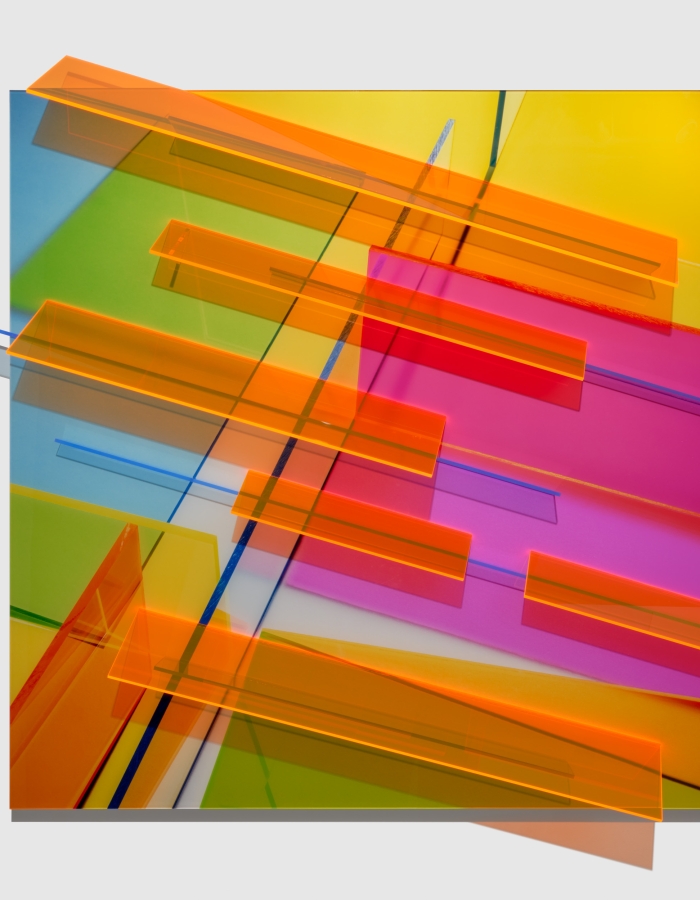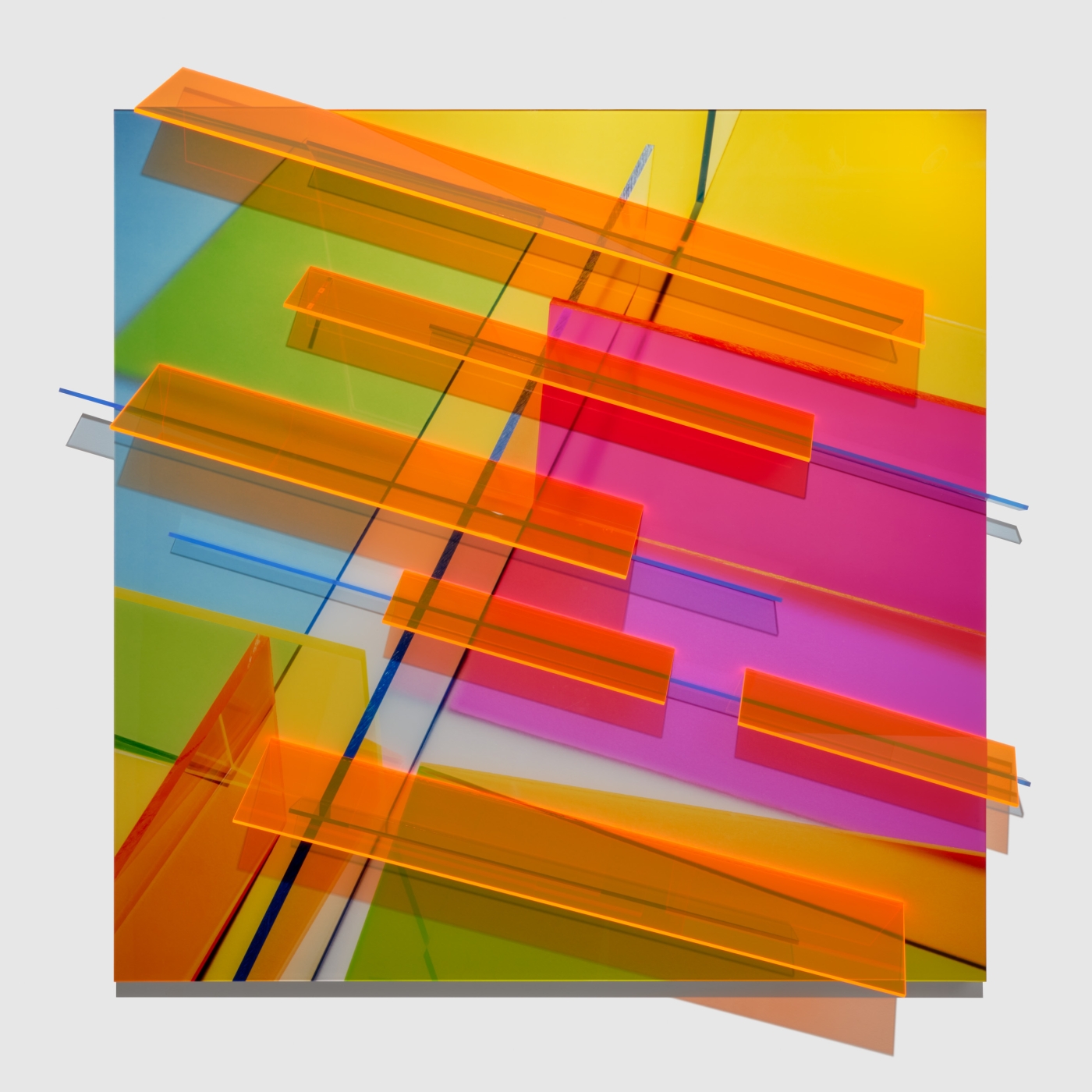

Barbara Kasten: Structure, Light, Land
The Glass House, a site of the National Trust for Historic Preservation, is pleased to present Barbara Kasten: Structure, Light, Land. For five decades, Chicago-based artist Barbara Kasten has created photographs and sculptural installations that reorient our sense of perception and explore the dynamic relationship between space, material, and form. Her artistic influences are deeply rooted in modernist architecture, the principles of Constructivism, and the interdisciplinary legacy of the Bauhaus, particularly the photograms of László Moholy-Nagy and Lucia Moholy.
“Placing my work in and around The Glass House campus is an opportunity for me to take on a canonical modernist site. Each of the structures on the grounds is like a monument to one of many aesthetic phases of architectural history. Abstraction allows us to consider possibilities that are not the norm,” said Barbara Kasten.
Structure, Light, Land features Kasten’s work from multiple series, including Architectural Sites, Collisions, and Progressions, as well as new iterations of digital projections, cyanotypes, and sculptures. With a striking interplay of light, color, and form, Kasten’s work infiltrates the grounds of The Glass House and responds to the site’s varied built environment and landscape.
In the Brick House (1949), Kasten’s brilliantly hued Architectural Site 1, June 10, 1986–featuring the Philip Johnson-designed Lipstick Building (1986) in Manhattan–resonates with the ’80s postmodern interior of the Reading Room, which includes two 1986 Feltri Chairs designed by Gaetano Pesce. Five new cyanotypes by Kasten line the building’s serene 1949 hallway, illuminated by the circular skylights above.
Kasten’s new installation of fluorescent acrylic I-beams, modeled after the structural components of the Glass House, will be interspersed throughout the Sculpture Gallery (1970). The seven-foot-long beams respond to the site’s permanent collection of works by Frank Stella, John Chamberlain, Robert Morris, George Segal, and Michael Heizer. The intervention brings attention to the structure’s exposed I-beam twenty feet overhead and responds to the gallery’s interior patterning of ever-changing natural light and winding staircases.
The Painting Gallery (1965) features three works: a photograph from the Collision series and two sculptural Progressions. Situated near Stella’s shaped canvases, Kasten’s fluorescent forms extend the narrative around post-painterly abstraction across mediums and into the present moment.
Da Monsta (1995), the last building Johnson designed at The Glass House, was named following a conversation between Johnson and the critic Herbert Muschamp. It was inspired in part by German Expressionism, an unrealized museum design by Frank Stella, and the work of Frank Gehry. Kasten’s Sideways Corner (2016/2025), a video projection of three-dimensional cubes in primary colors, activates the warped and torqued walls.
Admission
10:00 am to 4:00 pm
April 17th through December 15th











